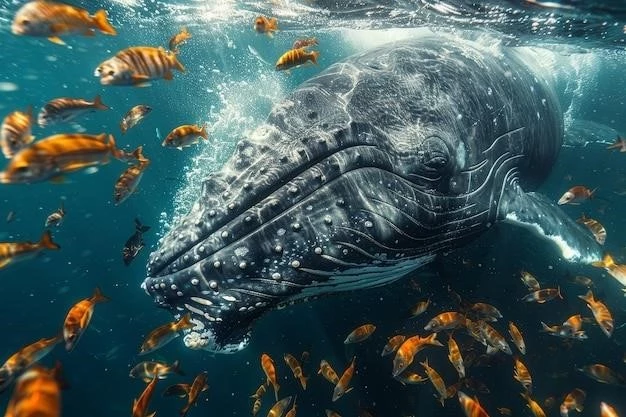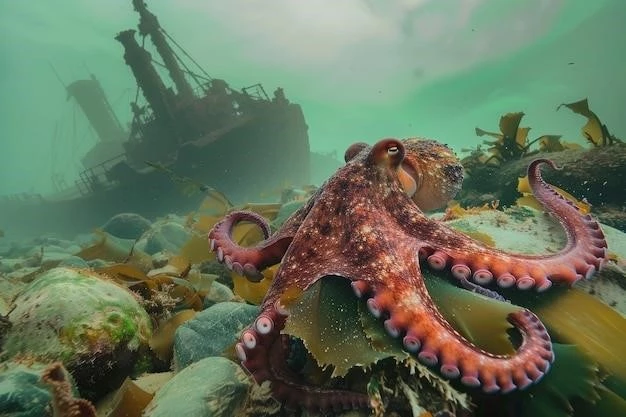The deep sea, a realm of perpetual darkness and immense pressure, is home to a staggering diversity of life. Yet, this enigmatic underwater world remains largely unexplored, concealing a multitude of creatures that have evolved to thrive in these extreme conditions. Among these, some stand out as particularly elusive, their existence shrouded in mystery and their sightings rare and fleeting.
The Giant Squid (Architeuthis dux)
The giant squid, a colossal cephalopod that has captured the imagination of mariners and scientists alike, is perhaps the most iconic of the deep sea’s elusive creatures. Its enormous size, reaching lengths of up to 43 feet (13 meters), and its formidable beak have fuelled countless tales of sea monsters. However, encounters with live giant squid are extremely rare, with most evidence of their existence coming from beached specimens, squid remains found in the stomachs of sperm whales, and occasional underwater footage. The giant squid’s elusive nature is attributed to its deep-sea habitat, its ability to camouflage itself in the darkness, and its highly sensitive nervous system, which allows it to detect approaching threats.

The Coelacanth (Latimeria chalumnae)
For decades, the coelacanth, a lobe-finned fish, was thought to be extinct, its last known fossil dating back to the Late Cretaceous period. However, in 1938, a living specimen was discovered off the coast of South Africa, marking a landmark discovery in the annals of zoology. Since then, coelacanths have been found in the waters off the coasts of East Africa and Indonesia, but sightings remain scarce. Their elusive nature is attributed to their nocturnal habits, their preference for deep, rocky reefs, and their remarkable ability to camouflage themselves against the ocean floor.
The Goblin Shark (Mitsukurina owstoni)
The goblin shark, a truly bizarre and archaic species of shark, is a living fossil, its lineage dating back over 125 million years. Its most distinctive feature is its elongated٫ shovel-like snout٫ which protrudes forward like a sword. The goblin shark’s diet consists primarily of fish and crustaceans٫ which it captures by ambushing them with lightning speed. This elusive creature٫ which dwells in the depths of the Pacific٫ Atlantic٫ and Indian oceans٫ is rarely seen٫ its sightings being limited to accidental catches by deep-sea fishing vessels.
The Vampire Squid (Vampyroteuthis infernalis)
The vampire squid, despite its name, is not a true squid, but rather a distant relative of both squid and octopus. Its unique features include its dark red coloration, its webbed arms, and its bioluminescent organs, which it uses to attract prey and communicate with other individuals. The vampire squid’s habitat lies in the oxygen-minimum zone, a layer of the ocean where oxygen levels are extremely low. This creature’s elusive nature is attributed to its ability to camouflage itself against the darkness, its preference for deep, oxygen-deprived waters, and its nocturnal habits.
The Deep-Sea Hatchetfish (Argyropelecus hemigymnus)
The deep-sea hatchetfish, named for its flattened, hatchet-shaped body, is a mesmerizing example of adaptation to the deep sea. It possesses a remarkable bioluminescent organ, known as a photophore, which it uses to attract prey, communicate, and camouflage itself against the darkness. This fish, which is found in the midwater zone of the ocean, is incredibly elusive, its sightings being limited to deep-sea expeditions. Its elusive nature is attributed to its small size, its nocturnal habits, and its ability to camouflage itself against the deep-sea environment.

The Importance of Elusive Creatures
These elusive creatures, despite their rarity, play vital roles in the deep-sea ecosystem. They are indicators of the health of the ocean, providing insights into the complex web of life that exists in this extreme environment. Their elusive nature, however, poses a challenge to researchers, who are constantly seeking new methods to study and understand these enigmatic beings. The quest to uncover the secrets of these elusive creatures is a testament to the boundless curiosity of humankind and the enduring fascination with the mysteries of the deep sea.
In conclusion, the deep sea’s most elusive creatures are a testament to the extraordinary diversity and adaptability of life on Earth. Their rarity and elusive nature make them a constant source of fascination and wonder, reminding us that there is still much to learn about the hidden world beneath the waves.










